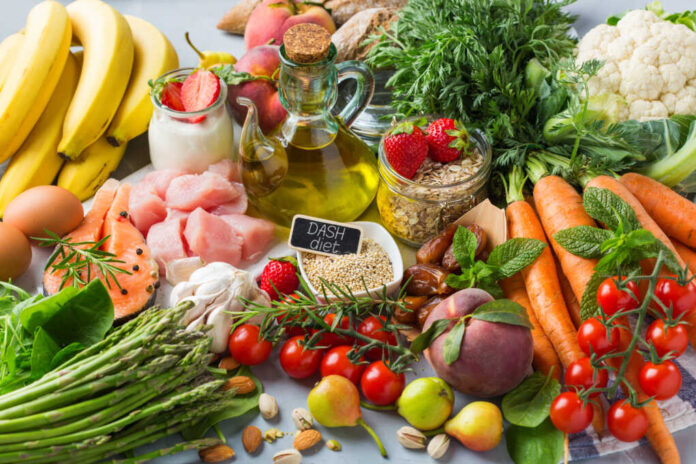
High blood pressure tends to go unnoticed or uncared for until it culminates in severe health complications.
In this context, the Dietary Approaches to Stop Hypertension (DASH) diet emerges not just as a dietary guideline but as a powerful tool in managing and preventing high blood pressure. This diet, grounded in years of research, underscores the profound impact of food choices on cardiovascular health.
Understanding High Blood Pressure and Its Impacts
High blood pressure, or hypertension, is often dubbed the ‘silent killer’ due to its subtle onset and gradual impact on the body. Left unmonitored or uncontrolled, it will generally lead to high risks of heart disease, stroke, and kidney failure.
The condition is influenced by various factors, including genetics, lifestyle, and diet. The interplay between these factors determines the overall risk and severity of hypertension.
The Genesis of the DASH Diet
Developed in the early 1990s through a series of clinical studies funded by the National Institutes of Health, the DASH diet was initially intended to lower blood pressure without medication. Researchers discovered that certain dietary patterns significantly reduced potentially dangerous blood pressure in individuals with and without hypertension.
Core Principles of the DASH Diet
At its core, the DASH diet emphasizes the intake of fruits, vegetables, whole grains, and lean proteins. It is low in saturated fat, cholesterol, and total fat.
A key aspect of this diet is its focus on increasing the consumption of potassium, calcium, and magnesium — minerals known for their blood pressure-lowering effects.
Potassium
Potassium plays a critical role in managing blood pressure by helping to balance out the negative effects of salt. The DASH diet promotes foods rich in potassium, such as bananas, oranges, and potatoes, which help relax blood vessel walls, thereby reducing blood pressure.
Calcium and Magnesium
Similarly, calcium and magnesium are vital in this dietary approach. Calcium helps in the smooth functioning of blood vessels, while magnesium aids in regulating blood pressure and blood sugar levels.
Foods like dairy products, green leafy vegetables, and nuts are excellent sources of these minerals.
Reducing Sodium
Another significant aspect of the DASH diet is sodium reduction. Excessive salt intake is a major contributor to high blood pressure. The DASH diet not only reduces salt consumption but also replaces it with herbs and spices, which add flavor without increasing blood pressure.
Lifestyle Integration: Beyond Diet
While the DASH diet is central in managing high blood pressure, it is most effective when combined with other lifestyle changes. Regular physical activity, maintaining a healthy weight, moderating alcohol consumption, and avoiding tobacco use significantly enhance the benefits of the diet.
Tailoring to Individual Needs
Numerous studies have validated the effectiveness of the DASH diet in lowering blood pressure and improving cardiovascular health.
However, you’ll need to adapt the diet to your individual nutritional needs, medical conditions, and taste preferences. Consulting with healthcare professionals can help tailor the diet for maximum benefit.
The Bigger Picture: DASH Diet and Overall Health
Beyond blood pressure management, the DASH diet contributes to overall health improvement. Its principles align with guidelines for preventing diabetes, obesity, and certain types of cancer. This holistic approach to health underscores the fact that what we eat significantly impacts our well-being.
The DASH diet stands as a testament to the power of dietary choices in managing health conditions like high blood pressure. Its success lies not only in its scientific foundation but also in its practicality and adaptability, making it a sustainable lifestyle choice for many.
By embracing the principles of the DASH diet, individuals can take a proactive stance in their health journey, reducing their risk of hypertension and its associated complications.
This approach to eating and living healthily is more than a diet ― it’s a pathway to a longer, healthier life.






















